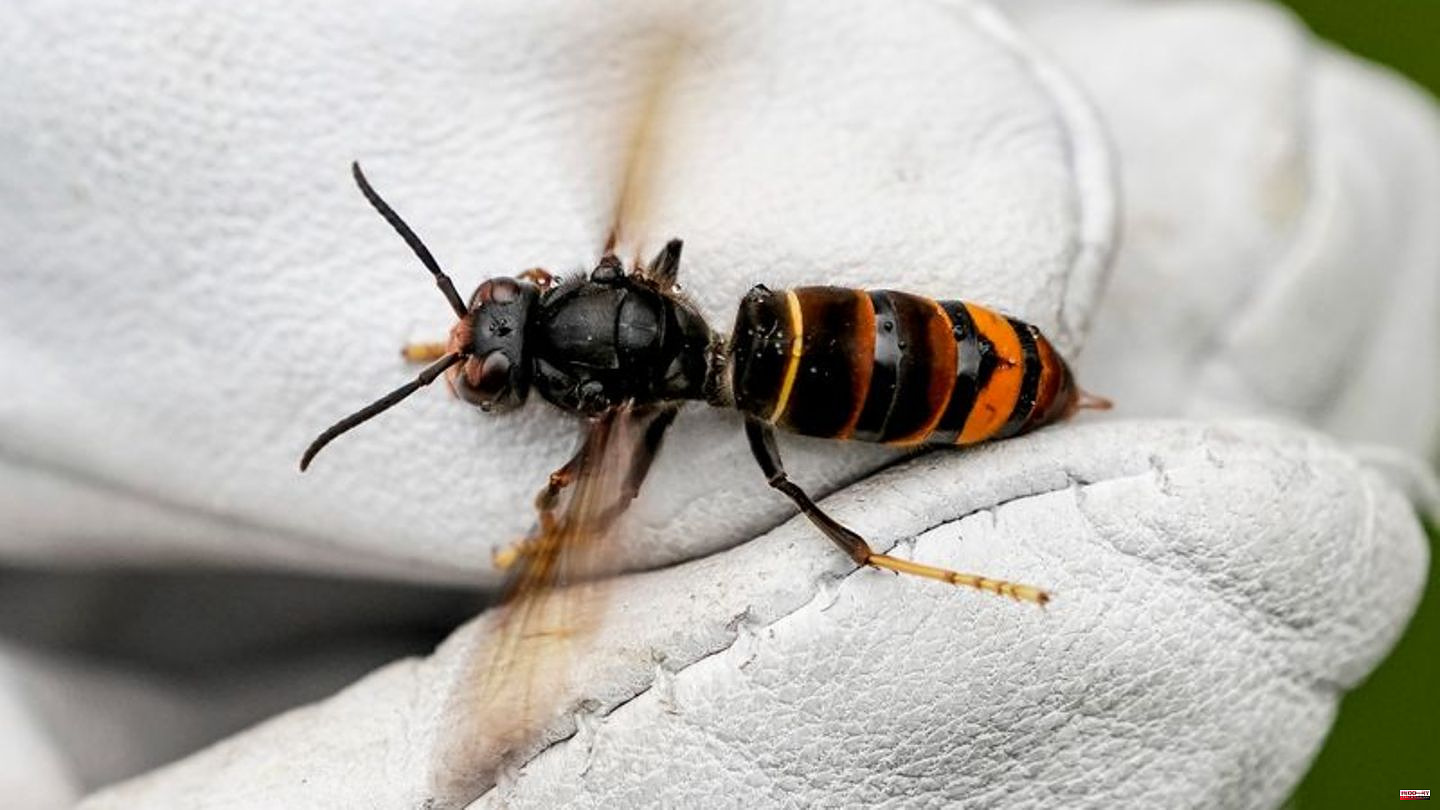The Asian hornet worries the Rhineland-Palatinate beekeepers' association. The organization is concerned about the increasing prevalence of the insects. Since autumn there has been "in places massive flights by the invasive species, which likes to eat honey bees," said Chairman Thomas Hock. "The first beekeepers complain about the loss of entire colonies." The beekeepers hope for the country's support in containing the species.
The situation has changed dramatically in the past year, said a spokesman for the Ministry of the Environment in Mainz. A task force on Asian hornets is planned in coordination with the Ministry of Agriculture. A strategic plan should also include the development and testing of drones to find and fight the hornets.
At a conference of the beekeepers' association in Neustadt an der Weinstraße, information about the Asian hornets was collected at the beginning of February. Vespa velutina, as the species is scientifically called, is at home in southern China and probably came to Europe via the transport of goods. In 2004 she performed in France for the first time. There is now evidence in Spain, Italy, Belgium and the Netherlands. In Germany, the Asian hornet was first detected in 2014 in Waghäusel north of Karlsruhe.
Last year she was spotted in front of schools and playgrounds in Worms, said Hock. Individual colonies have also been reported from Frankenthal and Hauenstein in the Southwest Palatinate. The northernmost find in Rhineland-Palatinate was registered near Osthofen
"She can fly like a dragonfly," Hock said. Standing in the air, they besiege the flight hole of beehives. "It can be so massive that bees can no longer leave the hive." As a "general predator", the Asian hornet also eats wasps, bumblebees and wild bees. Their diet also includes pears, apples and grapes.
"The species has an extremely high distribution potential," says Hock. The Asian hornet builds two nests, first a primary nest in spring at low altitude. From there, the colony moves to a secondary nest built in a tall tree, the size of a football and housing up to 5,000 hornets, including a few hundred queens.
The difficulty in fighting the novel hornet species begins with discovering the secondary nests, Hock explained. He hopes to use drones to find the nests from above. "Then the flight hole could be closed and the people rendered harmless." Since Vespa velutina is on the EU list of invasive species, the authorities must fight it as soon as a nest is discovered.
In the photo series from our archive, we present you with a wide variety of audio books about bees and insects: from dystrophic thrillers to factual textbooks.












